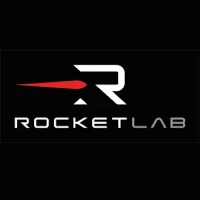It's Business Time
Launch Success
Liftoff Time (GMT)
03:50:00
Sunday November 11, 2018
Watch Replay
Official Livestream
Mission Details
Read Article
Launch Notes
The first operational launch of the Electron rocket.
Irvine 01
Irvine 01 is a U1 CubeSat built by high school students participating in the Irvine CubeSat STEM Program (ICSP), a consortium of six high schools from Irvine, California. The Irvine 01 mission is an educational mission that gives high school students the experience of building, testing, and controlling a nano-satellite, with the aim of developing interest and talent in the science and engineering fields.
Polar Orbit
1 Payload
1 kilograms
CICERO
According to Rocket Lab, "It's Business Time will also carry a satellite for GeoOptics Inc., built by Tyvak Nano-Satellite Systems. Headquartered in Irvine, CA, Tyvak Nano-Satellite Systems provides end-to-end nanosatellite solutions to governments, universities, and commercial organizations."
Polar Orbit
1 Payload
10 kilograms
NABEO
According to Rocket Lab, "NABEO is a new drag-augmentation subsystem that will be tested for the first time as part of the It’s Business Time mission. The NABEO drag sail is a subsystem created to passively de-orbit inactive small satellites. The small sail is an ultra-thin membrane that can be stored tightly within a spacecraft and then deployed once the satellite reaches the end of its orbital lifespan. The reflective panels unfold to 2.5 square meters to increase the spacecraft’s surface area, causing it to experience greater drag and pull the satellite back into the Earth’s atmosphere, enabling much faster de-orbiting and reducing the amount of space junk in Low Earth Orbit."
Polar Orbit
1 Payload
1 kilograms
Lemur-2
Spire satellites are built to conform to the CubeSat standard. The satellites are multi-sensor. Data types such as Automatic Identification System (AIS) service are used for tracking ships, and weather payloads measure temperature, pressure, and precipitation. AIS data is meant for use in illegal fishing, trade monitoring, maritime domain awareness, insurance, asset tracking, search and rescue, and piracy.
Polar Orbit
2 Payloads
8 kilograms
Proxima
Two Fleet Space Proxima satellites will form the foundation of Fleet's global IoT communications constellation.
Sun-Synchronous Orbit
2 Payloads
8 kilograms
Rocket


Agency
Rocket LabPrice
$7.50 million
Rocket
Height: 18m
Payload to Orbit
LEO: 320 kg
Liftoff Thrust
224 Kilonewtons
Fairing
Diameter: 1.2m
Height: 4.05m
Stages
3
Launch Site
Stats
Electron
3rd
Mission
2nd
Mission of 2018
Rocket Lab
3rd
Mission
2nd
Mission of 2018
2018
90th
Orbital launch attempt